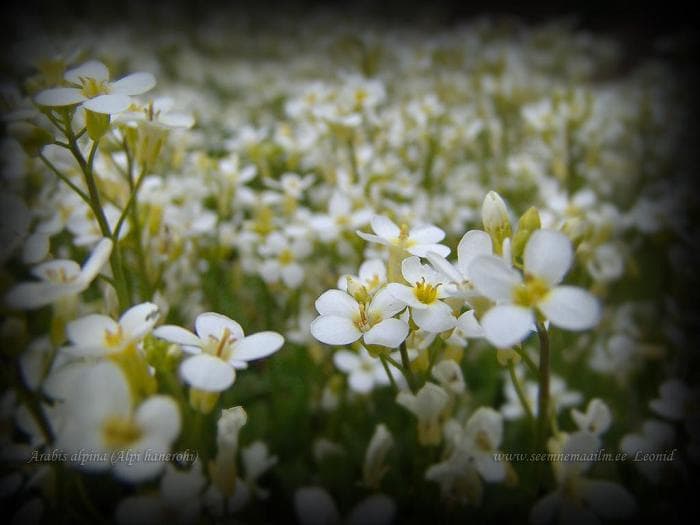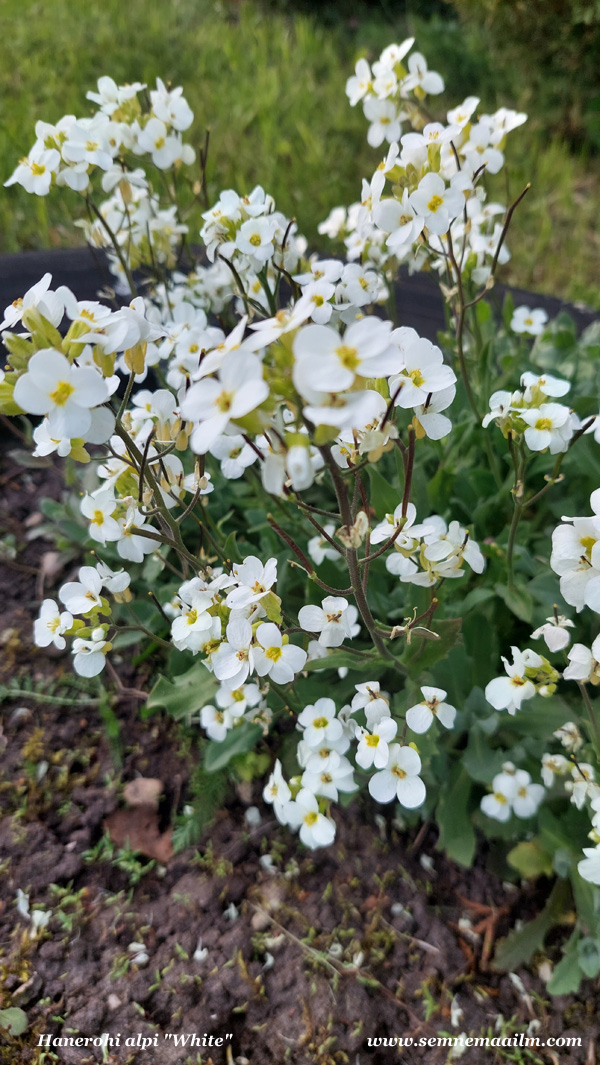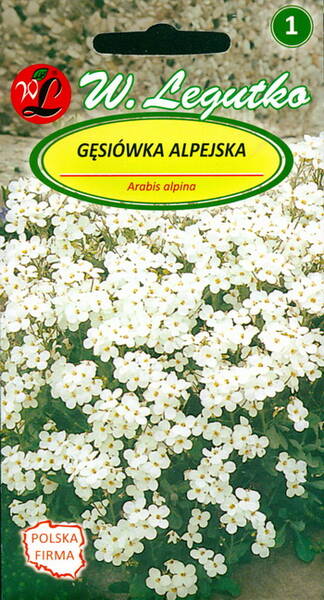A popular, lush-flowering perennial for rocky gardens.
The plant is 20-25 cm high. Silvery-white foliage, branched stems creeping along the ground and an abundance of snow-white large semi-double flowers collected in elongated (up to 5 cm) racemes. During the flowering period (mid-April - mid-June) it grows strongly, forming a lush carpet. After flowering, the plant is cut to a height of 4-5 cm. After 2-3 weeks, the shoots grow back and the bushes become lush.
Used for spring flower beds, alpine slides, borders and foreground ridges.
Agrotechnics.
The plant prefers sunny areas, but also tolerates partial shade, well-cultivated, loose soils. Seeds are sown in March in boxes with light sandy soil, lightly pressed into the soil without covering them with soil. The planting container is covered with glass and placed in a lighted place. At a soil temperature of +20°C, seedlings appear in 14-20 days. Seedlings are kept at moderate temperatures. Seedlings are planted in open ground at the end of May, the planting distance is 20-25 cm. You can sow directly in place in May. Seedlings bloom in the second year.

Great for rock gardens, edgings, borders or as a ground cover, Rock Cress (Arabis alpina) grows 6 inches in height, forming a low-growing mat of gray-green foliage and a carpet of pure white flowers in the spring, April thru June.
Physical Characteristics: Perennial growing to 0.15m by 0.4m . It is hardy to zone 5 and is not frost tender. It is in flower from March to May, and the seeds ripen in June.
The flowers are hermaphrodite (have both male and female organs) and are pollinated by Bees and Lepidoptera (Moths & Butterflies). The plant is self-fertile. We rate it 2 out of 5 for usefulness.
The plant prefers light (sandy) and medium (loamy) soils and requires well-drained soil.
The plant prefers acid, neutral and basic (alkaline) soils. It can grow in semi-shade (light woodland) or no shade. It requires moist soil.
Habitats and Possible Locations: Cultivated Beds, In Walls, In South Wall, In East Wall, In West Wall.
Cultivation details: Easily grown in ordinary well-drained soil. Prefers a sandy loam and a sunny position. Another report says that it prefers partial shade. Plants resent root disturbance and are best put in their final positions whilst still small. The flowers are attractive to bees.
Propagation Seed - it is best to surface sow the seed as soon as it is ripe in a light position in a cold frame. Seed can also be sown in spring. It usually germinates in 2 - 3 weeks at 21°c. When large enough to handle, prick the seedlings out into individual pots and plant them out in the summer.
Division after flowering. Very easy, the divisions can be planted out straight into their permanent positions if required. Cuttings in a shady border in summer.

White alpine rockcress.
Helpful advice.
If there are a lot of different types of seeds, and there is almost no space in the refrigerator, then we suggest you "sow" the seeds... in a dishwashing sponge.
Take a regular sponge with small pores and a dense backing. Cut 5-6 grooves with a blade, going deep to the middle of the foam layer, distribute the seeds in these grooves, lightly squeeze the sponge, moisten it until evenly moistened and place it in a bag so that the sponge does not dry out.
If the size of the seeds is smaller than the pores of the sponge or there are too many of them, then you need to place an insert made of thin nylon fabric in the cuts. In this case, the grooves should be made not to the middle of the sponge, but deeper.
Then everything according to agricultural technology for this plant, observing the swelling and cooling period. The seeds can begin to hatch already in the sponge, so it is important to look at them once every 2-3 days, combining them with airing the grooves. (In a sponge placed in the refrigerator on the coldest shelf, the seeds, as a rule, do not suffocate).
Seeds, even hatched ones, are easily extracted from the sponge using a toothpick with a wet tip and transferred to the soil.
















